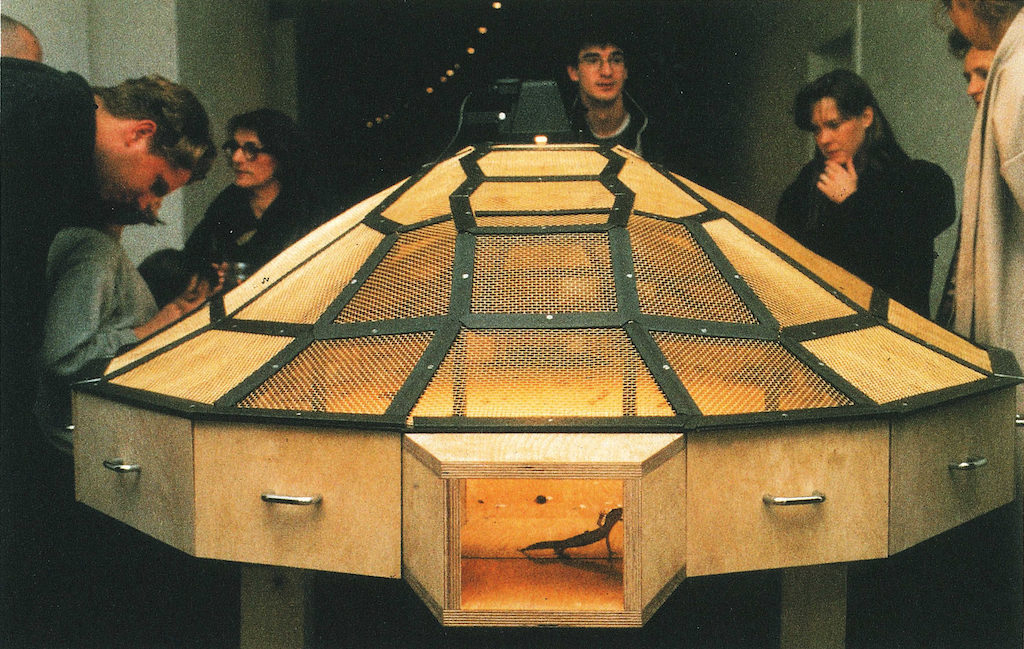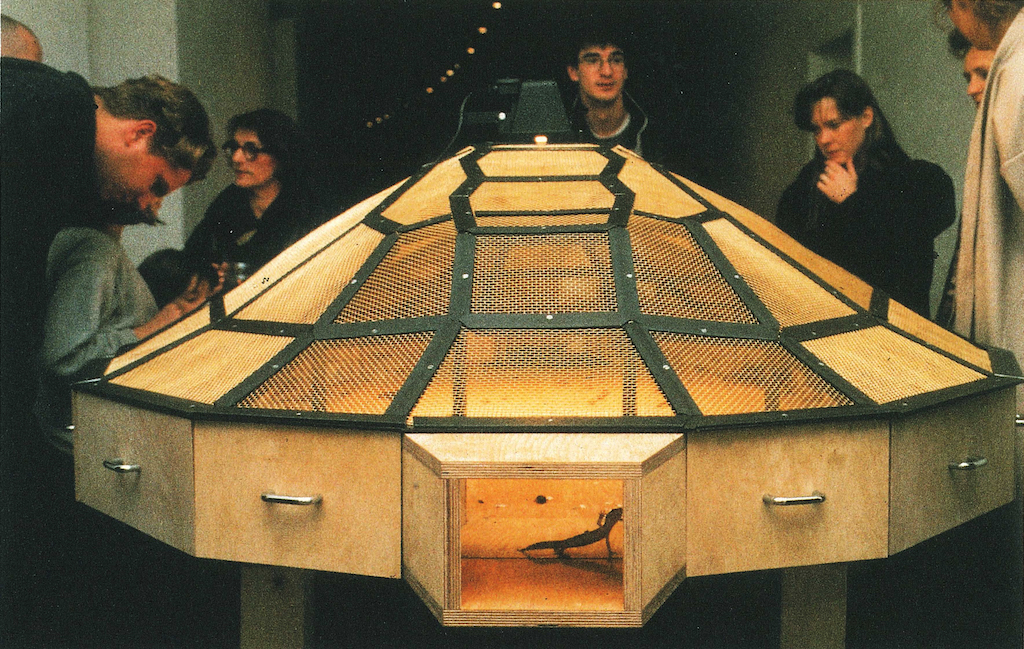[ad_1]

Huang Yong Ping, Theater of the World, 1993, wood and metal structure with warming lamps, electric cable, insects (spiders, scorpions, crickets, cockroaches, black beetles, stick insects, centipedes), lizards, toads, and snakes.
©HUANG YONG PING/GUGGENHEIM ABU DHABI
Looking Backward
Take an extremely deep dive into the 1980s New York scene, thanks to T, which has provided an hour-by-hour breakdown of what you could expect to find on any give day. Pretty women spying on Ai Weiwei! Late-night ragers at Larry Gagosian’s gallery! An unexpected early-morning visitor at Just Above Midtown gallery! Need we say more? [T: The New York Times Style Magazine]
But let the veterans speak for themselves. In a new conversation, over lunch at Katz’s Delicatessen, Ashley Bickerton, Barbara Bloom, Peter Halley, Jeff Koons, and Joan Wallace reminisce about the art world during that era. [T: The New York Times Style Magazine]
For the Reggia di Caserta in Italy, art historian and ARTnews contributor Barbara Rose will curate “Painting After Postmodernism,” a survey that provides a retort to the idea that painting is dead. Take that, Marcel Duchamp! [ArtDaily]
Looking Forward
New York has officially removed a public sculpture of J. Marion Sims, the so-called “father of gynecology,” who unethically experimented on black women without the use of anesthesia. It will now be moved to his grave in Brooklyn, and in its place will appear a newly commissioned artwork. [NPR]
For this year’s Carnegie International, at the Carnegie Museum of Art in Pittsburgh, Pennsylvania, Kerry James Marshall will revisit a work that he produced for the 1999/2000 edition of the exhibition. Included in that show was work from his “Rythm Mastr” series, which responds to the lack of black characters in comics. [CultureType]
Just an Outrage
Rahel Aima reports from “Culture and Its Discontents,” a symposium held earlier this month at the Guggenheim Museum in New York that dealt with “outrage activism,” but barely even addressed the institution’s own recent run-in with activists over works featuring animals in its “Art and China after 1989: Theater of the World” show. “As the evening wore on I got to feeling increasingly hateful myself,” she writes. [Art in America]
Margaret Carrigan on Jerry Saltz’s Pulitzer Prize for Criticism win: “Since October 2016, I wake up most days and think at least once, ‘What if Hillary had won?’ Today I woke up and thought, ‘What if Roberta had won?’ ” [The Observer]
Market
Nine artists have signed an open letter saying that the founders and owners of Los Angeles’s CB1 Gallery “have consistently failed to honor the gallery’s contracts” with some artists. Clyde Beswick, one of the gallery’s founders, said that the gallery is trying to resolve these issues. [ARTnews]
Remaining Hopeful
Max Hollein, the incoming director of the Metropolitan Museum of Art in New York, has been profiled by the New York Times, and the article comes with a picture of him wearing bright yellow rain boots. Some findings: Hollein knows a lot about contemporary art, he likes to hang out at electronic music shows in San Francisco, and he learned a lot from former Guggenheim Foundation director Thomas Krens. [The New York Times]
Tate in London is seeking a new trustee that would represent visitors aged 16 to 25. That addition to its board would, the museum hopes, be in their 20s and, in director Maria Balshaw’s description, “a cultural entrepreneur and digital native.” [The Art Newspaper]
In Culiacán, Mexico, a city where it’s not unusual to encounter and be affected by forms of violence, a surprising ray of hope has sprung up in the form of an art venue. The Culiacán Botanical Garden includes works by James Turrell, Allora & Calzadilla, and Teresa Margolles, and has become a reprieve in a place where “terror becomes normal.” [Hyperallergic]
[ad_2]
Source link

